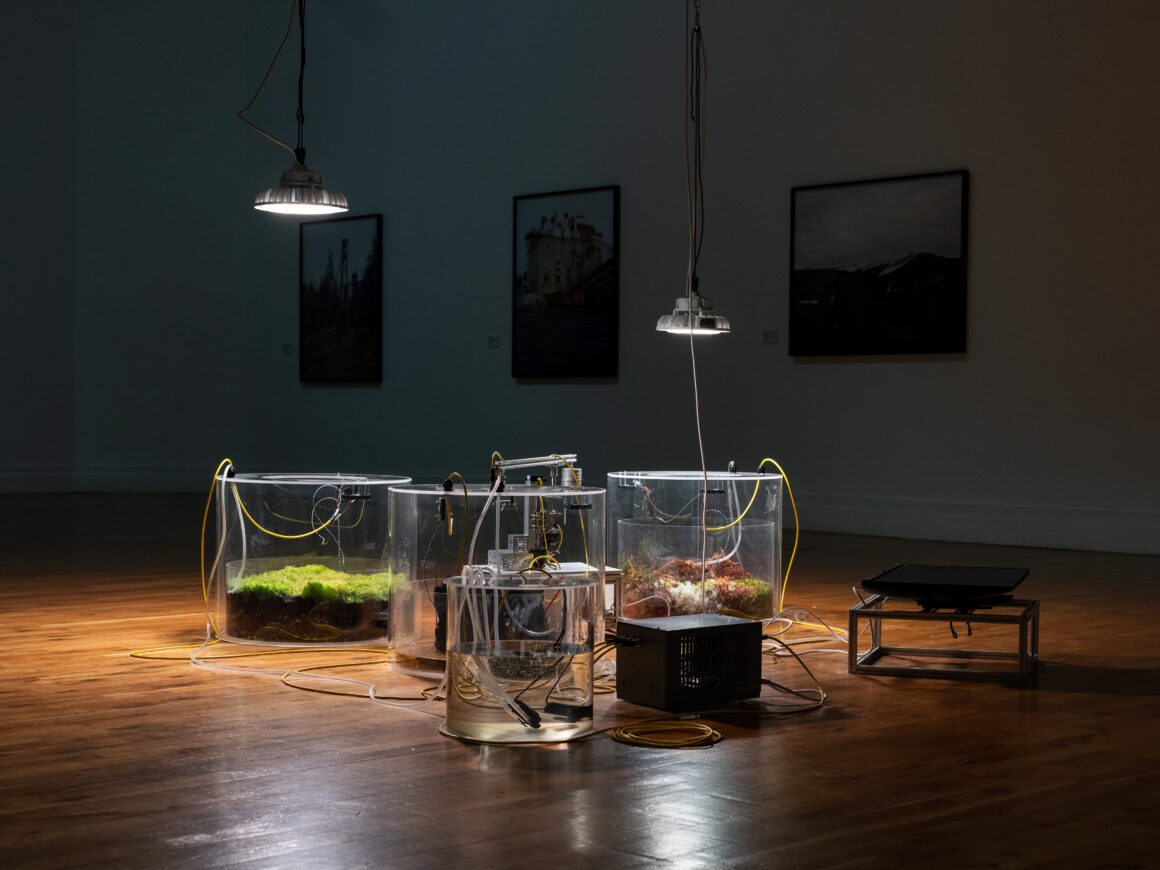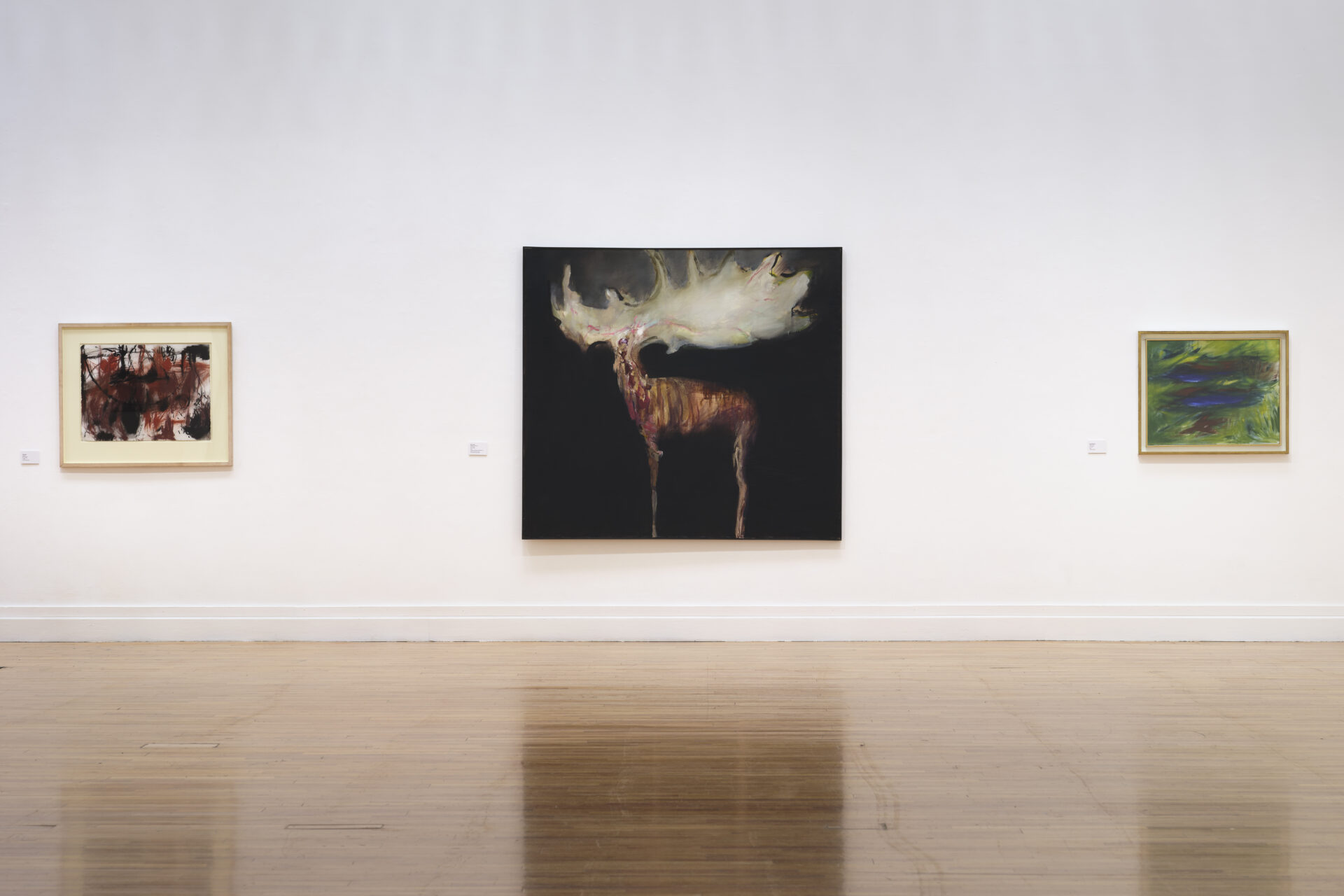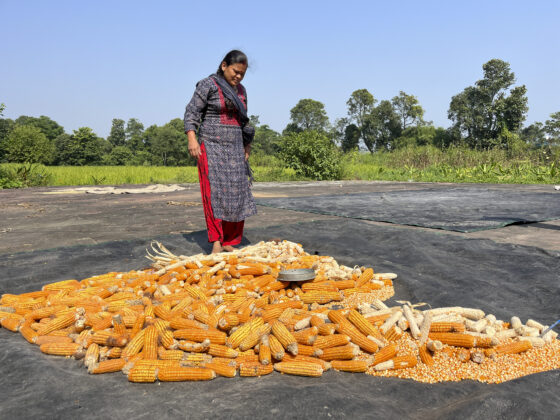Royal Hibernian Academy of Arts
31 January – 20 April 2025
Curated by RHA Director, Patrick T. Murphy, ‘BogSkin’ is a major group exhibition which spans 50 years of artistic engagement with the Irish boglands. The work of 20 artists is presented, with their collective output evincing both changing attitudes and lasting affinities. The bog variously represents the romantic, the unknown, and the poetic, just as much as it speaks to climate change and ecological disaster.
In Ireland, conversations about boglands almost always touch on the bog bodies on display at the National Museum. This embodied relationship with the bog forms part of the national psyche, channelling centuries and millennia of slow peat growth, the preservation of human remains, and the labouring hands that have dug it up for fuel. The artistic positions presented in ‘BogSkin’ range from the removed observer (creating abstract responses) and the anthropologist (documenting human life surrounding the boglands) to the scientist (studying minute ecological elements) and the performer (experiencing full bodily immersion).

A large screen shows a video of a wet and black spongy bog, surrounding a pool of red-brown bog water. Specks of white float on the water, which holds the reflection of Nigel Rolfe’s body. Looking down into the pool, but also looking through the screen at the viewer, his body appears upside down. The ripples in the water cause his apparition to flit in and out of distortion, as if dancing. Rolfe is, however, as still as a statue. He eventually tips slowly towards the water, as his feet sink into the spongy black earth, falling head-first into the bog hole. The sound of the crash fills the gallery, before the artist reemerges, sopping wet.
Robert Ballagh’s painting, The Bogman (1997), is a self-portrait of the artist cutting turf. Some kind of ancient jewel is submerged below his feet, while flying overhead is a raven – the bird of prophecy in Celtic mythology. Camille Souter’s oil painting, The bog, early morning (1963) overlays muted tones of beige, grey, brown, and green, in scenes that show people working or moving. Bold lines scratch away the paint to reveal a blue underlay, evoking the dividing cuts of the sleán, enacting a manmade geometry over the natural landscape. Barrie Cooke’s Megaceros Hibernicus (1983) depicts the long extinct Irish Elk. The large canvas barely contains the mammoth deer’s body, which is surrounded by matt black, evoking the timeless vacuum experienced by a body cocooned underneath the bog. One imagines a narrative unfolding between these three works: a group working to cut peat; an individual striking a bone; a body, frozen in time for millennia, coming back to this world.
Patrick Hough’s film, The Black River of Herself (2020), gives voice to bodies preserved beneath the bog. “I’m not ready to leave,” says the ghoulish corpse of a woman to the archeologist excavating her, this exposure to the air affecting her decomposition – a second death. She has wisdom, derived from centuries of observation swathed in peat, and is highly critical of contemporary man’s impact on the environment. “And now a broken bog bleeds carbon…”
These pieces engage with the macabre concept of the ‘revenant’ – a body preserved from the moment of death and brought back to life. However, the chemical makeup of boglands provides not only the ability to sequester bodies, but the efficient absorption and storage of vast amounts of carbon from the atmosphere. Fiona McDonald’s automated sculpture, We Share the Same Air [1.1] (2024), explores the ecological and atmospheric significance of peatlands. Monitored by a CO2 sensor, three transparent chambers are periodically opened and sealed by a central robotic arm, showing how unexcavated green peatlands filter carbon from the air. Conversely, the black, shorn plains of cut bog, actually leak stored carbon back into the atmosphere, producing a stark visualisation of environmental degradation.

Shane Hynan presents photographs from his ongoing series, ‘Beneath | Beofhód’, which observes the raised bogs of the Irish midlands and the culture surrounding them. A large black and white image, titled Recently Rehabilitated Esker Bog with Mount Lucas Wind Farm in the Distance (2023), portrays the bleak expanse of a ploughed bog, showing a barren, puddle-covered landscape with no traces of wildlife. Until fairly recently, County Offaly was associated with the commercial harvesting of peat by Bord na Móna – a process that permanently ceased in 2021 as the company mobilised its new green energy business plan. In the far distance, an urban skyline features the silhouettes of wind turbines, thus signaling a new beginning in power generation technologies.
Perhaps one of the most well-known works concerning the Irish boglands is Brian O’Doherty’s Rick (1975) – a large-scale assemblage of hand-cut turf, originally installed at the David Hendrick’s Gallery in Dublin. With current awareness of the importance of preserving boglands, the sale of turf was banned by the state under solid fuel regulations in October 2022. It was therefore not possible to recreate O’Doherty’s sculpture for the show; however, photographic documentation of the piece is exhibited as part of ‘BogSkin’. As the boglands are now left to recover after centuries of damaging excavation, it will be interesting to see how artistic relations with this enigmatic landscape continue to evolve.
Ella de Búrca is an artist and Assistant Lecturer at NCAD.
elladeburca.com



